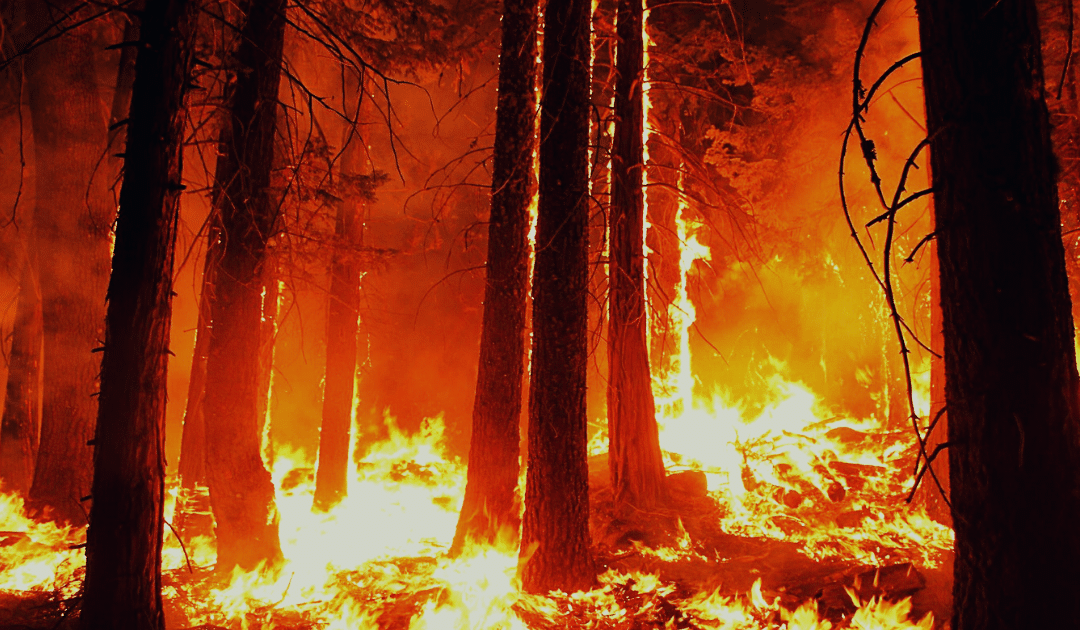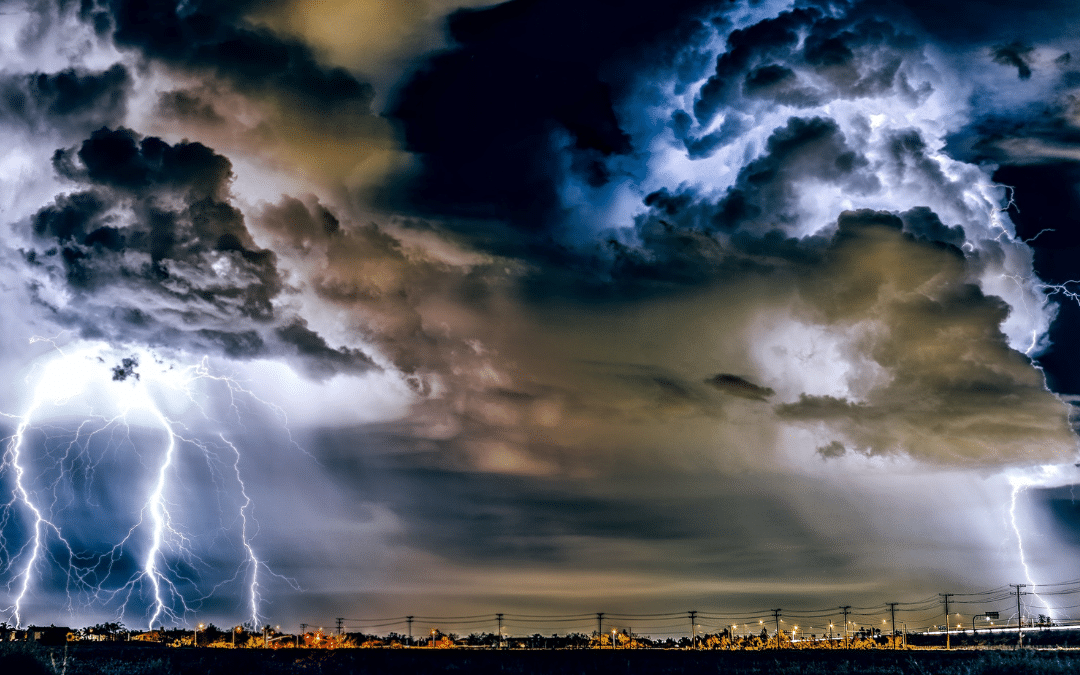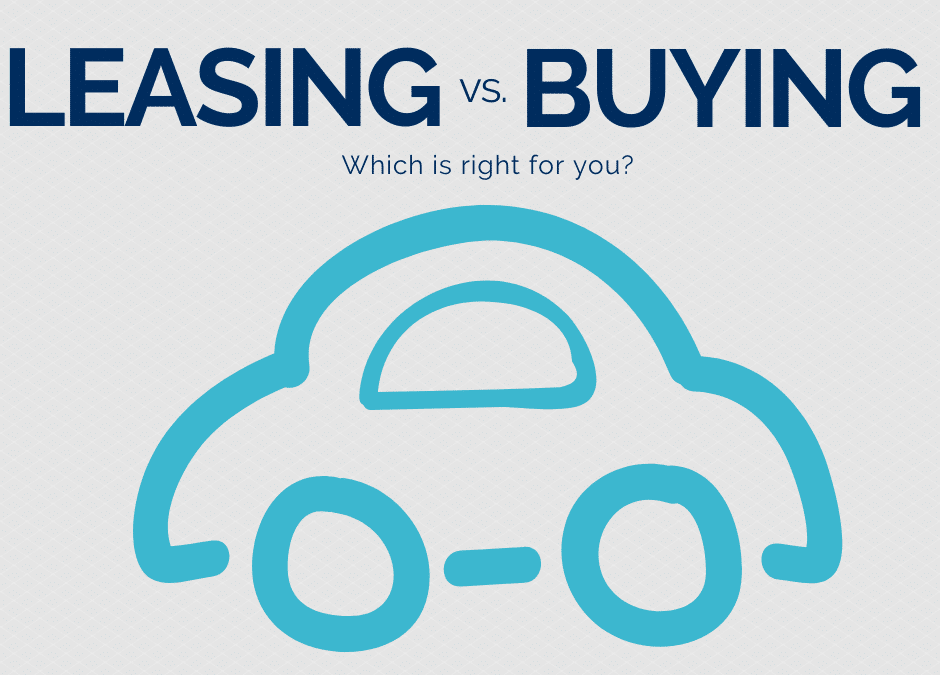
by California Casualty | Health, Safety |
Emergency preparedness will help you and your family stay safe in the event of a disaster. House fires, flash flooding, and natural disasters can happen anywhere at any time, and as we move into summer- hurricane and wildfire season, the risk for an emergency is even greater.
Coronavirus (COVID-19) has completely changed the way we interact with others- and will for the foreseeable future. That’s why it’s important to take action now to make sure you and your family are prepared for an emergency situation, while still taking the proper precautions to avoid COVID-19.
Here’s how to be prepared for an emergency during the middle of a pandemic.
Make a Preparedness Kit
Emergency Preparedness Kits are kits built for you and your family to have in the event of a disaster. These kits include all essential items that you would need to survive i.e. bottled water, toilet paper, copies of important documents, medication, food, chargers, hygiene items, etc.
The Red Cross recommends that during COVID-19, you should assemble two different emergency kits for you and your family.
Stay-At-Home Kit- This kit should include 2 weeks of emergency supplies. In the event that you or your family are exposed to the virus and you have to self-quarantine you should have everything that you would need to survive for 2 weeks without leaving your home.
Evacuation Kit- This kit should include 3 days of supplies in a “go bag”. It should hold all of your basic needs, yet be lightweight and easy to grab/carry in the event of an emergency evacuation. It is recommended that you have enough supplies for 72 hours. This also includes supplies for your health and safety in large crowds i.e. face masks, sanitizer, alcohol wipes, etc.
The Red Cross also recommends that each kit should have a 1 month supply of prescription medication along with fever-reducing medicine and cough suppressants.
Other Disaster Planning Tips
Making a disaster plan during a pandemic requires planning ahead, because of the need for social distancing. In the event of a natural disaster, sheltering in large buildings like school gyms and community centers may no longer be an option, and you will have to seek shelter elsewhere.
Here are some tips, the Red Cross recommends, to help you and your family develop a disaster plan.
-
- Register for emergency alerts
- Stay up-to-date on COVID-19 advice and restrictions for your state
- Have an evacuation transportation plan
- Have a safe destination set for your family to meet, if you become separated
- Research open lodging (campgrounds, hotels, shelters) and their restrictions, in the event of an evacuation
- Keep enough PPE, disinfectant, and medicine in your emergency kit for your family
- Do not stay with friends or family who have been exposed to COVID-19, are experiencing symptoms, or are at a higher risk of developing the virus
- If you think you have COVID-19 or have been exposed- self-quarantine, keep your distance (if possible), and contact your doctor as soon as you are safe and able.
For more tips click here.
This article is furnished by California Casualty, providing auto and home insurance to educators, law enforcement officers, firefighters, and nurses. Get a quote at 1.866.704.8614 or www.calcas.com.

by California Casualty | Homeowners Insurance Info, Safety |
Unpredictable weather is a trademark of spring: 73° and deliciously sunny one day, 41°, and sideways rain the next.
Fluctuating weather during this time of year also plays a major factor in the development of severe spring storms. However, with the right preparation, you can be sure that your home and family are ready to withstand the worst of it.
Follow these preparation tips to be sure you are spring storm-ready.
Be Weather Aware — You can sign up for a number of free weather alert services provided by national or local agencies, weather channels, and power companies. Usually, alerts come to your phone via text message or app, but many have multiple delivery methods. And remember, radio is the old standby, especially in a power outage (so set your emergency radio to the correct station ahead of time).
Trim the Trees — Trim low-hanging limbs, as well as any branches hanging near your home or power lines that could snap off in high winds and cause damage.
Free Your Gutters — Remove leaves and other debris from gutters, drains, and downspouts (best done each spring and fall). This ensures that any deluge of rainwater is quickly diverted away from your home and foundation rather than potentially flooding it. Take the opportunity to check gutters for leaks, damage, and sagging; also make sure they’re securely attached.
Check the Sump Pump — If you haven’t had to deal with a flooded basement, thanks are due to your hardworking sump pump. To keep it in good working order, test it a few times a year, including before spring storms. Clear any debris and make sure it’s working and draining properly. Consider adding a battery-powered back-up pump, or a standby generator, in case of power outages.
Get Ahead of Leaks — Leaks are sneaky … and can cause damage quickly. If you’ve had any leaks in the past, now’s the time to seal them up—before the big rains start. Also do a preventive check on your doors’ and windows’ sealing (inside and outside), as well as in the garage and basement, then fix any gaps or cracks.
Secure Items — By the time the wind is bending trees, it’s too late to worry about securing items in your yard. As soon as storms are forecast, bring items like patio furniture into the garage (or secure them in place outside). Anything that can become a projectile should be moved inside. Also close and secure shutters around your home. Drawing interior blinds and shades provide yet another layer of protection against flying debris and broken glass.
Get Your Plans in Place — When the storms roll in, you’ll be glad you made plans ahead of time.
-
- Storm Safety Plan — Create a safety plan with your family, and make sure everyone understands it and is on board. This would cover things like shelter-in-place locations in the home, evacuation routes, communication protocols if you’re separated, and a plan for your pets.
- Emergency Kit — Regularly check your kit and add, replace or discard items as needed. See our checklist here for a full emergency kit inventory. At the very least, prepare the following for storms: first aid supplies, flashlights with new batteries, two gallons of water per person, a hand-crank or battery-powered radio, a three-day supply of non-perishable food for your family and pets, and a two-month supply of any necessary medications.
- Be Ready for a Power Outage — Are you ready for a few days of no power? Charge all phones and electronic devices ahead of time. Make sure your generator is operational and ready to go. Fill your car’s gas tank (and some cans for your generator). For more tips, check out our power outage safety hacks. Finally, remember to use surge protectors when the power is being restored.
As the saying goes, “An ounce of prevention is worth a pound of cure.” When it comes to safeguarding your home, the steps above can go a long way toward preventing costly damage, headache, and hassle. And there’s no time like the present to start!
This article is furnished by California Casualty, providing auto and home insurance to educators, law enforcement officers, firefighters, and nurses. Get a quote at 1.866.704.8614 or www.calcas.com.

by California Casualty | Homeowners Insurance Info |
The plumbing in your home could be in danger when temperatures dip below zero, and the last thing you want to deal with when it thaws is a burst pipe, which can lead to substantial damage in your home.
All that water can eat through drywall, destroy carpets and fry electronics. The Federal Emergency Management Agency estimates that just two inches of water can cause more than $10,000 in repairs and replacement of flooded items. Six inches of water can add up to more than $30,000!
Before the thermometer plunges, here are things you can do to prevent pipes from freezing:
- Disconnect outside hoses from faucets
- Insulate water pipes, especially along exterior walls and unheated areas
- Add insulation to walls and attics where pipes may run
- Know where the shutoff valve is to your home
Once the sub-zero weather hits you should:
- Let faucets drip to prevent freezing
- Keep the thermostat above 55 degrees
- Make sure garage doors are closed
- Open kitchen and bathroom cabinets to allow warm air to circulate around the plumbing
So you’ve prepared and kept as much heat as possible going to cold areas, but the cold air still froze a pipe; what now? Stay calm but act as quickly as possible to:
- Locate where the pipe is frozen
- Open the nearest faucet to relieve pressure when the ice thaws
- Slowly warm the pipe with a heating pad, hairdryer, space heater or wrapping it with hot towels – never use a blow torch or open flame
If the pipe has cracked or broken, immediately turn off water at the main water valve and call a plumber. Shutting off the water will prevent further damage.
And if you have damage from a broken water pipe:
- Try to prevent further damage
- Contact your insurance company as soon as possible
- Take photos or video of the damage
- Don’t make permanent repairs until the insurance company adjuster inspects the damage
- Keep all of your receipts for emergency repair work or temporary housing if you are forced out of your home or apartment
Once a pipe freezes, odds are it will happen again. Here are some tips to prevent it in the future:
- Hire a plumber to relocate to a warmer area
- Add more insulation in walls, attics and crawl spaces
- Wrap the pipe with electric heat tape, when temperatures drop, plug it in
Remember, if a burst pipe sends water into your home, contact a California Casualty Claims advisor as soon as possible; we can help get you started on the clean-up.
For more information visit:
https://bit.ly/30Q8dvP
https://bit.ly/36nEewu
https://rdcrss.org/2vmD9bp
https://bit.ly/3aG6xJW
https://bit.ly/2vnJ9Rj
This article is furnished by California Casualty, providing auto and home insurance to educators, law enforcement officers, firefighters, and nurses. Get a quote at 1.866.704.8614 or www.calcas.com.

by California Casualty | Auto Insurance Info |
What is the smarter choice, buying or leasing a car? It’s a tough question with no wrong or right answer. The truth is this major financial decision ultimately depends on your lifestyle and budget. Buying Traditionally, financing the purchase of a vehicle often means...

by California Casualty | Calcas Connection, Consider This |
If you love the roar of a muscle car or the gleaming chrome of a restored classic – and have made your passion for owning one a reality – these important insurance facts pertain to you.
As you know, collectible vehicles are an investment. Some are now selling for hundreds of thousands of dollars. If something were to happen to your beloved ’57 T-bird convertible, ’69 Camaro Z28, or ’55 Mercedes 300SL Gullwing, you need full replacement value insurance coverage.
And the insurance you have on your every day, commuter vehicle doesn’t offer that. A typical auto insurance policy is based on actual cash value and depreciation, so the older your vehicle is, the less it is worth.
 Some people don’t insure their collector vehicles because they store them or drive them so seldom, but that could be a big mistake.
Some people don’t insure their collector vehicles because they store them or drive them so seldom, but that could be a big mistake.
Classic car auto insurance pays the agreed value if the vehicle is damaged in a fire, flood or during transportation, or if it is stolen. It also covers the higher cost of repairs if someone scratches the paint or chrome, or steals a specialty part.
It’s true. Classic car insurance protects the vehicle for the full agreed value, meaning it covers these desirable cars and trucks for their increased worth.
Classic auto policies offer the same coverage options as standard insurance – liability, collision, comprehensive, and medical pay – while also protecting the vehicle’s true worth.
Here’s the best part, classic auto insurance usually costs less than standard auto insurance because classic and collector vehicles are normally driven less, are kept garaged, and owners typically maintain them better; therefore, they are considered a better risk.
Classic car policies do come with restrictions:
- The vehicle must be stored in a locked, safe garage or storage facility
- The insured vehicle is unique or at least 15 years old
- It is not used as a regular commute vehicle
- All drivers have a clean driving record
California Casualty’s Agency Services division offers insurance for collectible, classic, antique and exotic vehicles with:
- Protection for the full agreed value
- Adjustable deductibles
- Towing
- Coverage for lost or stolen parts
- Mileage plans
There are many choices to insure your classic vehicle. Our partner for classic car insurance is Condon Skelly. Unlike most classic insurance providers, Condon Skelly does not limit mileage or require seasonal coverage, while still offering competitive rates.
TAKEAWAY:
Contact one of California Casualty’s Agency Services advisors today to arrange insurance for your classic or collectible car at 1.877.421.8348 or visit www.calcas.com/classic-car-insurance






 Some people don’t insure their collector vehicles because they store them or drive them so seldom, but that could be a big mistake.
Some people don’t insure their collector vehicles because they store them or drive them so seldom, but that could be a big mistake.